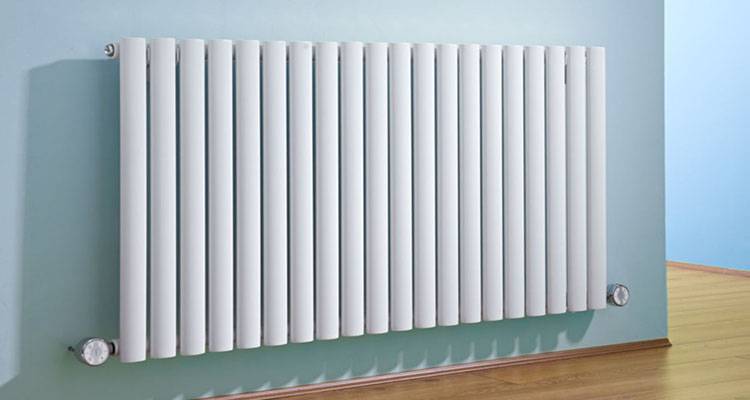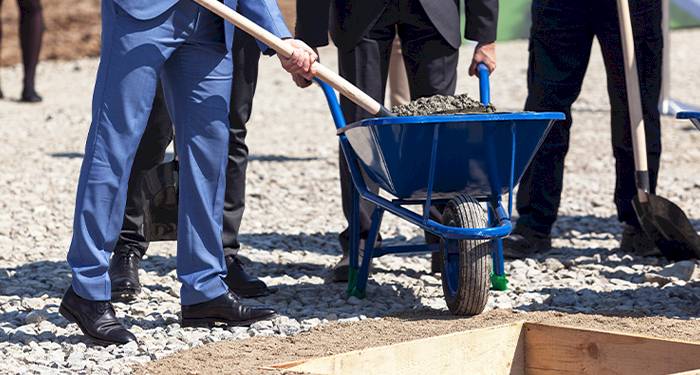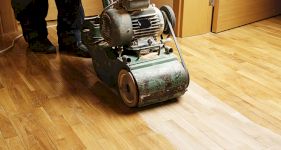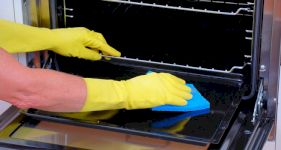Installing Heat Recovery System Cost
- The average cost of installing a heat recovery system is £6,900.
- Installing a heat recovery system usually takes 2 to 5 days.
- The cost of installing a heat recovery system, and the main factors that impact the price.
- The different types of heat recovery systems, and whether you can install one DIY.
- How to find and hire a heating engineer near you.
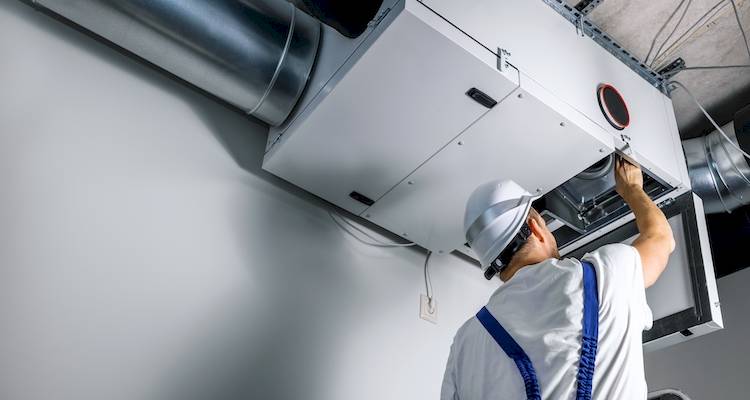
£6,900
Table of Contents
- How Much Does It Cost to Install a Heat Recovery System?
- Supply Only Costs
- Labour Costs and Timescales
- Additional Energy Efficiency Upgrade Costs
- Cost Factors of Heat Recovery System Installation
- Can I Install a Heat Recovery System Myself?
- Building Regulations & Planning Permission for a Heat Recovery System Installation
- Types of Heat Recovery Systems
- Checklist: Hiring a Heating Engineer to Install a Heat Recovery System in the UK
- FAQs
- Sources
How Much Does It Cost to Install a Heat Recovery System?
What is a heat recovery system?
A heat recovery system operates through a mechanical ventilation with heat recovery (MVHR) unit, typically located in a building's attic, roof space, or plant room.
Rather than simply extracting indoor air and replacing it with cold, outside air, a heat recovery system takes the warmth from the outgoing air, using that heat to warm up the fresh, incoming air.
The incoming and outgoing air is moved through separate ducting, meaning there's no cross-contamination of airflows. Instead, the heat recovery unit is linked to the room air valves via a ducting network throughout the building.
Do I need a heat recovery system?
Whether a heat recovery system is necessary in your property is mostly determined by:
- Your property's age - Older, draughty properties typically aren't suitable as the system loses its effectiveness, whereas modern properties with good insulation and limited airflow can benefit.
So, what's the cost of a heat recovery system?
The cost of heat recovery varies from domestic to commercial installations.
Residential heat recovery and ventilation systems typically cost between £3,500 and £12,000, depending on the amount of work required – such as pipework repair – and the size of the property.
Looking for a heating professional to install a heat recovery system? Find local heating engineers with MyJobQuote.
Heat Recovery System Prices
The average cost of a heat recovery system in the UK is £6,900.
To give you an idea of the range of costs, here are some typical residential heat recovery and ventilation system installation prices for different-sized properties:
| Size of Property | Total Estimated Cost |
|---|---|
| 1 - 2 bed flat | £3,500 - £5,000 |
| 3 - 4 bed semi-detached property | £5,000 - £8,000 |
| 4 - 5+ bed detached property | £8,000 - £12,000 |
When determining a price for heat recovery installation, several site-specific issues must be considered. These typically include:
- The property's age
- Level of insulation
- Ease of access for ducting
- Complexity of installation
Whole house heat recovery systems are customised to each application, and are based on:
- The size of the house
- The number of extract and supply points required
- The heat recovery unit's requirements
The type of MVHR unit will be determined by the system variation used in the heat exchanger. Counterflow, crossflow, and rotary wheel are the three options.
Supply Only Costs
The most common types of residential mechanical ventilation with heat recovery systems are counterflow and crossflow.
Although some rotary wheel heat exchanger units are suitable for residential installation, they are more commonly found in commercial systems.
Counterflow Heat Exchanger Cost
A counterflow heat exchanger costs between £2,000 and £8,000 on average.
The price will be determined largely by the size of the unit, the brand, and the features and functions that it performs. Some will include intelligent regulations with summer bypass and frost protection elements.
On the other hand, others are more basic and simply perform the heat exchange between the extractor supply airflows.
Crossflow Heat Exchanger Cost
Crossflow heat exchangers typically cost between £1,000 and £2,500.
They function similarly to counterflow heat exchangers, in that they both consist of heat plates that funnel both stale and fresh air.
However, counterflow heat exchangers use air flows that travel in opposite directions, whereas crossflow heat exchangers use air flows that cross each other.
Rotary Wheel Unit Cost
Rotary wheel units are not frequently used in domestic MVHR installations. Their design lends itself better to larger buildings like those found in public buildings, hotels, and factories.
However, some units can be installed in domestic settings, and cost between £1,700 and £3,500.
The cost of installing an MVHR system includes a design process required for the system to function properly. Therefore, the correct and efficient installation of the MVHR will be dependent on the system's proper design.
Ducting for a typical 250sqm home will cost around £2,250, depending on the duct used. Flexi ducting, semi-rigid plastic, and even galvanised metal are all available in various sizes and qualities.
After the system is installed, it has to be commissioned, which means that a technician checks to make sure that it is working properly and that the airflow to each room is as it should be, known as system balancing.
The cost of commissioning an MVHR system ranges between £400 and £800.
| Supply | Total Estimated Cost |
|---|---|
| Counterflow heat exchanger | £2,000 - £8,000 |
| Crossflow heat exchanger | £1,000 - £2,500 |
| Rotary wheel unit | £1,700 - £3,500 |
| Ducting for a 250sqm property | £2,250 |
| System commissioning | £400 - £800 |
Labour Costs and Timescales
On average, mechanical ventilation with a heat recovery system takes 2 to 5 days to install.
The exact duration of the job will be determined by the size of the property, the complexity of the installation, and the contractor's experience.

The simplest installations are in newly constructed properties with a good design and easy access.
Retrofits on older properties, while not ideal, are still possible. However, the job may take longer due to the existing infrastructure that must be negotiated, and labour costs will most likely be higher.
The costs for installing mechanical ventilation with a heat recovery system usually combine:
- The physical installation of the MVHR unit
- Fitting ducting and electrical components
- System design
- Commissioning costs
The design of the MVHR system is critical to its successful operation and installation.
Designing an MVHR system is easier for a new build than for a refurbishment or retrofit, and the earlier it is done in the building design, the better.
However, careful planning and design are required because re-routing electrics and pipework is far easier than re-routing large ducting.
The labour cost for designing the system can range between £450 and £700, based on the particular of the installation.
Additional Energy Efficiency Upgrade Costs
Triple Glazing Cost
Triple glazing is more expensive, but better at heat insulation.
Double glazing is the most common glazing type in the UK, but triple glazing is gaining popularity. This is because triple glazing can help reduce heat loss during the cold winter months as it performs the same function as double glazing, but better.
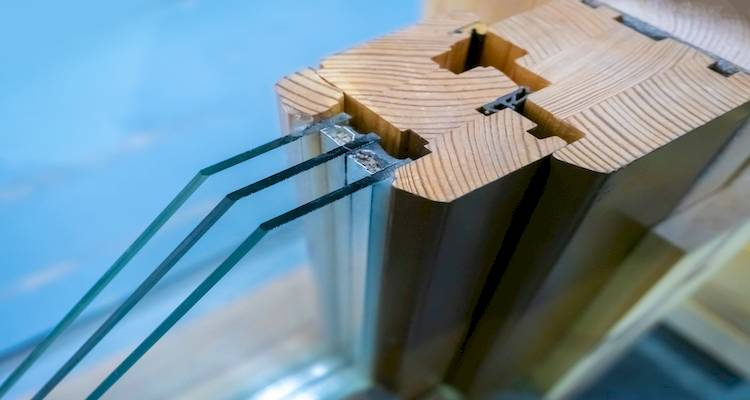
The average cost of installing triple glazing is £4,000, depending on the size of the home and the number and style of windows installed.
Solar Panel Installation
Solar panel installation costs around £4,000 on average.
The price can vary depending on the following factors:
- Type of solar panel (monocrystalline or polycrystalline solar cells)
- Number of solar panels
- Ease of access
Roof Insulation
Roof insulation installation costs around £450 depending on the scope and size of the project.
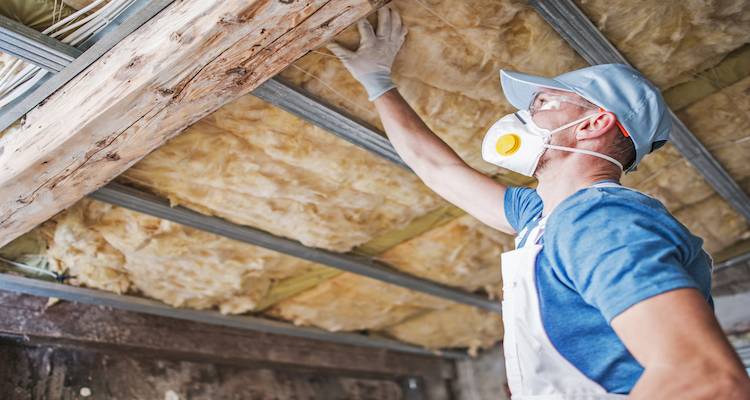
The type of roof typically determines the cost of installing roof insulation, as well as the materials used.
Cost Factors of Heat Recovery System Installation
Unit Design
The heat recovery ventilation system you choose will influence the cost.
Counterflow heat exchangers are most commonly used in domestic settings because they give better efficiency than crossflow units. As a result, there are many variations on the market, with prices ranging from £2,000 to £8,000.
A basic unit will have four inlet/outlet points, two fans (one supply and one exhaust), a heat exchanger with filters, and a control unit.
High-end models include built-in summer bypass, frost protection, Wi-Fi operation, and pre-heaters.
Accessibility
Each installation will be unique in terms of design and layout. While new construction is ideal for installing an MVHR system, it can also be installed in other situations.
Designing the system for a new property while still in the planning stages allows for the most flexibility in positioning the unit and the most suitable layout for the ducting to the supply or extract points.
Similarly, there will be adequate and complete access to the building voids to fit the ducting and unit with no need to work around the current infrastructure when installing in new construction. The most common reason for retrofitting a heat recovery ventilation system is a lack of ducting access.
Manoeuvring around joists, pipework, and junction boxes is not only difficult and time-consuming, but it also has the potential to make the entire system inefficient.
Working around obstacles may necessitate more ductwork joints and bends, which will affect airflow. Because of the air resistance, the fan in the heat recovery system will have to work harder to compensate, resulting in more noise and higher operating costs.
The additional work of laying ducting on the existing property will result in higher labour costs.
Property Dimensions
In addition to the type of ducting used in your MVHR system, the amount of ducting required will have a cost impact.
The size of the property and the specific MVHR unit required to ventilate the entire house will determine this.
Of course, the number of supply air valves required will be determined by the number of rooms.
Air supply and extract valves typically cost between £5 and £10, depending on if they are made of plastic or metal.
Property Location
As with most aspects of home improvement, the location influences the cost of services, contractors, and materials. Large cities, particularly the capital, will always command higher prices.

Due to the higher cost of living, owning and sustaining a home in London and the southeast of the UK is always more expensive than in other parts of the country.
House Airtightness
Mechanical ventilation with heat recovery systems was once thought to be only useful in passive houses or similar structures, but this is no longer the case. Although it is correct that the more airtight the building, the more effective the system, this does not preclude its installation in a standard home.
An MVHR system could provide adequate air quality and cost-effective heat recovery if combined with good insulation and effective action against air leakage.
Efficiency And Cleanliness
The length of a ducting system, the dimension or smoothness of the ductwork, and the number and radius of the bends all influence efficiency.
All these characteristics aid in the reduction of noise within the system and the hygiene of the ducting, which can have an impact on air quality.
Choosing the type of ducting should be done with caution because it is a mature decision; it will be challenging and disruptive to correct a cost-based mistake.
Can I Install a Heat Recovery System Myself?
While some mechanical ventilation with heat recovery systems are sold as DIY kits, it's recommended that you hire a professional contractor to complete the installation for you.
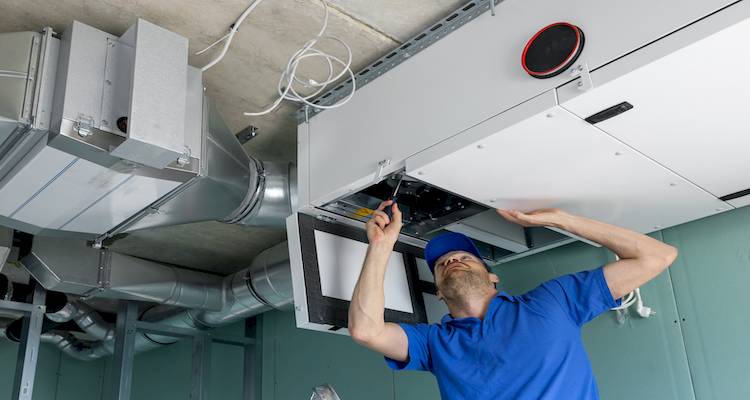
DIY Installation Risks
- Choosing the wrong size kit will negatively impact your property's airflow, causing damp and air quality problems.
- Ducting installation needs to be precise to avoid issues with airflow and noise.
- Buying individual components may mean they don't work together.
- The system needs to be commissioned professionally under Building Regulations.
Building Regulations & Planning Permission for a Heat Recovery System Installation
Here's what your contractor will follow to ensure your installation is compatible with Building Regulations:
Building Regulations Part E (Soundproofing and MVHR)
According to the regulations, "rooms for residential purposes shall be developed and constructed so that they offer reasonable resistance to sound from other parts of the building."
There aren't explicit decibel limits for MVHR, but your contractor will likely follow Passivhaus guidance (German building standards for energy efficiency):
- 35dBA in the installation or plant room
- 25dBA in the living areas
- 30dBA in functional rooms such as the kitchen
Part F Building Regulations (Ventilation and MVHR)
Part F of Building Regulations sets the standards for ventilation in new construction, developments, and redevelopments.
MVHR technology assists architects, developers, and builders in meeting the UK building ventilation guidelines when properly specified, designed and installed.
A properly specified and installed MVHR system should recover heat at more than 90% in the main unit, with total electricity consumption of around 0.3W/m3h.
Experts recommend you fit high-quality filters within the main unit for the best possible air hygiene. A minimum filter grade of F7 on the intake and G4 on the extract.
The system must be the correct size for the building. It should be large enough to provide ventilation for the entire structure, with controllable airflow at three levels (background, standard, boost), following Building Regulations.
Types of Heat Recovery Systems
There are three types of heat exchangers which are essential components of mechanical ventilation with a heat recovery system. The heat exchanger variations are counterflow, crossflow, and rotary wheel, and the MVHR system cost will vary depending on which one you choose.
Counterflow Heat Recovery System
Supply and exhaust air enter the heat exchanger from opposite sides in a counterflow unit, and while they traverse the heat exchange plates, they never physically meet. On average, 85% to 95% of the heat recovered from the extract supply is transferred to the supply air.
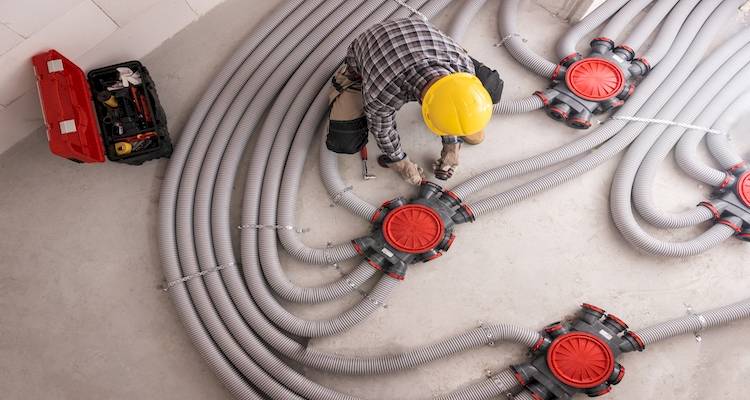
Pros
- ✔ Can handle large volumes of air
- ✔ Highly efficient compared to other systems (up to 95%)
Cons
- ✖ May cost more than other systems
- ✖ Potentially more bulky than other options
Rotary Wheel Heat Recovery System
A rotary wheel heat exchanger works by absorbing the heat from the exhaust air, and transferring it to the supply air as it rotates. They're most common in larger, commercial buildings.
Pros
- ✔ Can handle very large volumes of air
- ✔ Long lifespan
Cons
- ✖ Risk of contamination of the supply air with exhaust air
- ✖ More useful in commercial and industrial settings
Crossflow Heat Recovery System
A crossflow heat exchanger enables the supply and extract air flows to intersect perpendicularly. They are isolated by aluminium plates that conduct heat from one to the other.
Pros
- ✔ Not as expensive
- ✔ Around 65% to 75% heat recovery
Cons
- ✖ Less efficient than other systems
- ✖ Lower heat recovery
Checklist: Hiring a Heating Engineer to Install a Heat Recovery System in the UK
Choosing a reliable, specialist MVHR installer can be difficult, so we've put together some guidelines to help you in your search:
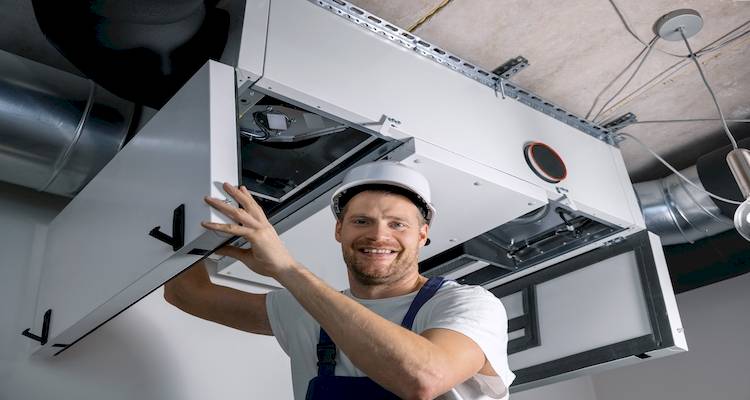
- Gather at least 3 quotes from different contractors to compare their prices using MyJobQuote.
- Ask for an itemised breakdown of costs in written format so there are no discrepancies on what is and isn't included, eliminating hidden costs.
- Check the contractor's qualifications, and see if they've completed similar jobs in the past.
- Make sure to read past customer reviews for the contractor to get an idea of their work ethic and quality.
FAQs
Does a heat recovery system save you money?
Do heat recovery systems work?
Do heat recovery systems stay on all the time?
Sources
https://www.bpcventilation.com/blog/do-heat-recovery-systems-work/
https://www.renewableenergyhub.co.uk/main/heat-recovery-systems-information/is-installing-a-heat-recovery-system-worth-it/
https://www.bpcventilation.com/media/catalog/product/_/i/.installation_of_a_heat_recovery_system_with_unit_info_2016.pdf
https://www.renewableenergyhub.co.uk/main/heat-recovery-systems-information/types-of-heat-recovery-system/
http://www.ecoflowventilation.co.uk/mvhr-comply-building-regulations-uk/




